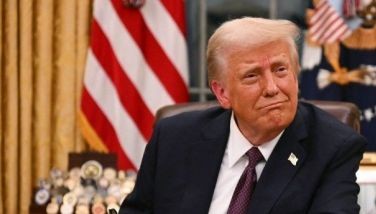DTI confident of meeting export target by 2022
MANILA, Philippines — The country remains on track to meet the total exports goal of $122 billion to $130 billion by 2022, with outbound merchandise shipments seen to recover and grow in the subsequent quarters as the government addresses core issues affecting exporters and promotes other products to diversify exports.
Trade Secretary Ramon Lopez said yesterday the government is confident the country would still achieve the total export target of $122 billion to $130 billion under the Philippine Export Development Plan (PEDP) by 2022.
This, even as merchandise exports slid 3.13 percent to $16.377 billion in the first quarter from $16.906 billion in the same period last year.
For the month of March alone, the country’s merchandise exports dipped 2.5 percent to $5.876 billion from the previous year’s $6.024 billion.
Lopez said the decline was a reflection of the slowdown in the global economy, with nine out of 11 Asian economies registering lower exports except for Vietnam and China.
He said the Philippines is also affected by the negative sentiments brought by the US-China trade war as the country is part of a global production network.
Electronic products, which account for bulk of the country’s merchandise exports, are expected to continue to decline this year as global demand for electronic parts and final goods weakens.
Still, the government is expecting a turnaround in the country’s merchandise exports performance this year.
“We expect a positive growth trajectory to set in in the subsequent quarters,” Lopez said, noting the government is taking steps to promote the growth of exports.
As part of the government’s action plan, he said core issues affecting exporters such as supply, competitiveness, port operations or logistics and infrastructure gaps would be addressed.
He said the government is also working on diversifying the country’s export offerings and destinations.
In particular, the government is promoting other products which are seen as growth drivers to be shipped overseas such as office equipment; consumer electronics; motor vehicle and motor vehicle parts; high-value coconut products; forest products like plywood and fiber board; and wearables.
In terms of service exports, the government is pushing for audiovisual or creative industries like film, animation and game development; healthcare information management systems; software development; and tourism-related services.
Lopez said the DTI is likewise pursuing trade initiatives to increase exports to trade partners.
Based on recent negotiations, he said Indonesia has revoked anti-dumping on bananas and allowed for the exports of shallots, while there are talks with Singapore for the importation of more agricultural products like fresh fruits and vegetables, meat and poultry products from the Philippines.
In addition, the DTI continues to encourage exporters to maximize opportunities under existing preferential trade agreements with the Association of Southeast Asian Nations, China, Japan, South Korea, India, Australia and New Zealand, India as well as with European Free Trade Association countries.
“We are also promoting more products to the US and EU (European Union) to expand utilization of their GSP (Generalized Scheme of Preferences) schemes,” Lopez said.
To expand markets for exports, the DTI is undertaking promotional efforts in non-traditional markets like Russia, Africa, Latin America and South Asia which are expected to have high economic growth.
Philippine Exporters Confederation Inc. president Sergio Ortiz-Luis Jr. said in a telephone interview the umbrella organization of exporters in the country also expects targets under the PEDP to be met despite the dip in outbound merchandise shipments in the first quarter, as issues affecting the sector are addressed.
“We hope the trade war would simmer down and policies would have closure,” he said.
Among the issues which need to be addressed is the moratorium on new mining projects, implementation of the Ease of Doing Business Act which sets a required period for government transactions to be completed, as well as high shipping costs and congestion at ports.
He said providing funding for exporters would also be beneficial for the exports sector.
- Latest
- Trending






























